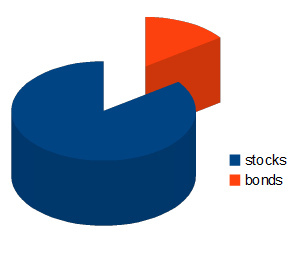Bond investing basics are simple. When you buy a bond, the bond issuer – either a government or corporation – pays you an agreed-upon rate of interest known as the coupon rate. In addition, you get your original investment back when the bond reaches a maturity date.
Bonds come in many flavors: taxable and tax-exempt, long- and short-term, AAA-rated and junk, inflation-protected, fixed-rate and variable-rate.
Before investing in a bond issue, you should consider several factors.
Do you want to go long- or short-term? Normally, longer-term bonds pay higher interest than shorter-term bonds. However, monetary policy and inflation expectations vary with time, so sometimes the normal yield curve may flatten (meaning short- and long-term rates are equal) or invert (short-term rates are higher than long-term rates).1 When this occurs, it can be very hard to sell a long-term bond because investors can get the same or higher rate investing short-term.
The big question here is: where do you want to be on the yield curve? How long do you want to invest your money for a given return on your investment?
How much risk do you want to assume? As interest rates go down, the value of a bond goes up and when interest rates climb, a bond’s value falls. If an investor wants less risk, he might choose to buy a short bond, as its value will fluctuate less when interest rates vary. Long bonds usually offer higher interest rates because they typically carry more risk.
If an investor wants no risk, short-term U.S. Treasuries may be a good choice. After all, Uncle Sam backs them up – but they pay a comparatively low rate of return.
A bond’s duration relates to risk. (The duration of a bond is a measurement of how long it will take for the price of a bond to be recouped by internal cash flow.) A debt instrument with a 1-year duration is not very sensitive to interest rate fluctuations, while a really long bond with a 35-year duration will have its value fluctuate sharply with even a small interest rate change. Generally, a bond that pays a higher interest rate and has a longer term will have a higher duration.2
How important is the rating to you? Investors usually look to Standard & Poors or Moodys for bond ratings. Government bonds are perceived as less risky than private sector bonds. Some bond investors do have relatively high risk appetites, with some even buying “high yield” or “junk” bonds from troubled firms whose interest payments are in doubt. The riskier a bond, the higher the interest rate investors will demand.3
Do you want a tax-free or taxable bond? Many federal and municipal bonds are tax-exempt to some degree. Correspondingly, their coupon rates are lower than corporate bonds. You need to compare muni bond and corporate bond rates on an after-tax basis. You do this by calculating the tax-equivalent yield, which equals the tax-free interest rate divided by (1 investor’s federal tax rate, or federal tax bracket).4
Consider two investors. Investor A pays a 25% federal tax rate while Investor B is in the 35% federal bracket. Should they buy a municipal bond paying 4%, or a highly rated corporate bond paying 6%?
Well, the real question becomes: What will they take home after taxes?
They run the numbers on the muni bond. Investor A calculates his after-tax yield as 5.33% (4%/(1-.25) = 5.33%). Investor B gets 6.15% (4%/(1-.35) = 6.15%) after taxes.
Investor B chooses the muni bond. However, Investor A figures out that the tax exemption saves her less, so she selects a corporate bond and pays taxes on it.
Other options include inflation protection and variable rates. Treasury Inflation-Protected Securities (TIPS) are issued by the U.S. Treasury, and their principal depends upon the Consumer Price Index. Their principal increases with inflation and decreases with deflation. TIPS appeal to investors who fear that inflation could erode the value of their investment. When TIPS mature, the investor redeems either the original value of the security or the inflation-adjusted value, whichever is greater.5
Investors who can tolerate varying interest payments may decide to buy a variable-rate bond. The return on these bonds reflects the general level of inflation, and commonly rises with rising interest rates.6
Bond investing demands educated decision-making. Fortunately, bonds come in enough varieties that investors can find bonds appropriate for their tax situation, time horizon, and risk tolerance.
To get to know more about Verizon Retirement click here
Related Investing In Bonds Articles

